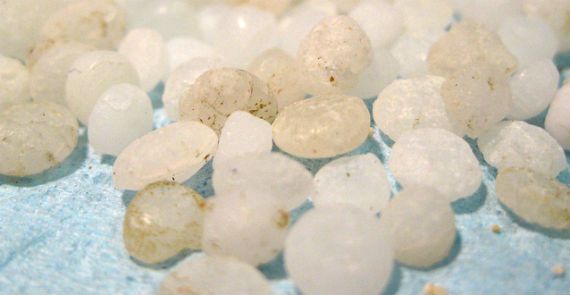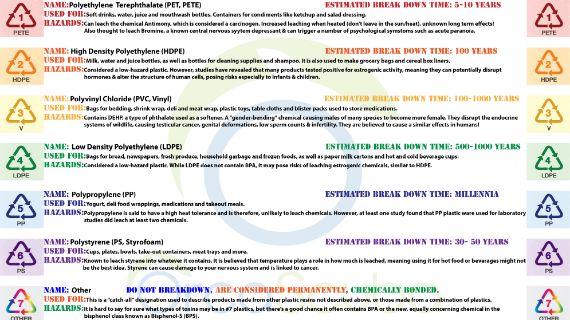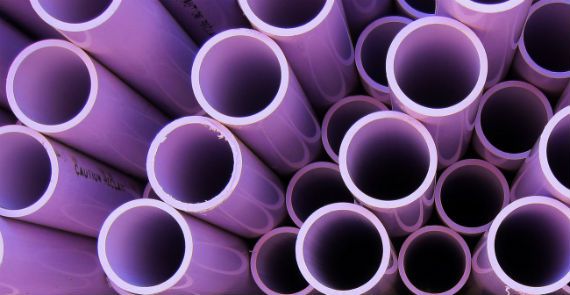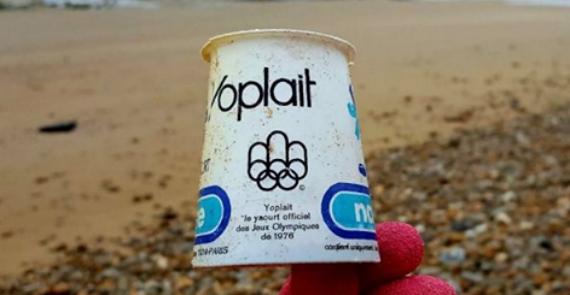Plastic Classification
Plastics can be classified in numerous ways, either by their chemical structure made up from a polymer backbone and side chains, e.g. acrylics, polyesters, silicones, polyurethanes and halogenated plastics or by the process used for their production.
In general, we divide two types, thermoplastic and thermosetting polymers.
Thermoplastics do not undergo chemical change in their composition when heated and can be molded repeatedly. Examples are Polyethylene, Polypropylene, Polystyrene and Polyvinyl chloride.
Thermosets can melt and take shape once. After they have set they stay solid. In the thermosetting process a chemical reaction occurs that is irreversible, the product is rigid and non-tacky.
Nurdles are very small pellets of various plastics which serve as raw material in the manufacture of plastic products.

Other classification methods look at physical properties such as density (floating or sinking), flammability (colour of flame, smell, touch and sound), their structure, whether they are biodegradable, their electrical conductivity, strength, resistance to chemical products etc.
A lot, but not all plastic products carry a so called Resin Identification Code to help the consumer identify the type of plastic.
Check the Resin Identification Code
The Society of the Plastics Industry (SPI) introduced its resin coding system to identify the various resins found in plastic bottles and containers to make their sorting and recycling easier (for recyclers in Canada).The code has no other purpose.
The Resin Identification Code, is the number printed on the bottom of most plastic bottles and food containers. It describes what kind of plastic resin the product is made of.
Despite the similarity in appearance between the SPI symbols and the Möbius loop, the universal recycling symbol ♻, the SPI code neither indicates that the product can be recycled locally or recycled at all, nor is it meant as a guide for safe use for food or beverage contact.
Recycling firms have varying standards for the plastics they accept and so, not all types are recycled at all facilities. You would need to check with your own municipality to determine what types of plastics they collect.
This chart, which you can use to help you make informed decisions on your plastic usage, indicates what each Resin Identification Code means.

#1 Polyethylene Terephthalate (PET, PETE)
...is used for many household bottles such as soft drinks, water, juice and mouthwash. It is also used for condiment containers like ketchup, salad dressing, mayonnaise, jelly and jam.
The potential danger posed by these bottles is leaching of the toxic metal antimony, which is considered a carcinogen. One study conducted on water produced in Europe and Canada found concentrations of antimony that were more than 100 times the typical level found in clean groundwater.
It is thought that the longer a bottle of water sits on a shelf in a store or in your home, the greater the dose of antimony present. It is also believed that the amount of antimony leaching from these PET bottles varies based on exposure to sunlight, higher temperatures, and varying pH levels.
Bromine, which is known to act as a central nervous system depressant and can cause numerous psychotic symptoms, has also been found to leach from PET bottles.
#2 High Density Polyethylene (HDPE)
...which is considered a low-hazard plastic, is frequently used for milk, water and juice bottles, as well as bottles for household cleaning supplies and shampoo.
It is also used to make grocery bags and cereal box liners. Like most plastics it has been found to release estrogenic chemicals. These chemicals can be disruptive to hormones and even alter the structure of human cells posing high risks especially to infants and children.
Even products that were found to be free of other common plastic toxins tested positive for some hormone disrupting, estrogenic chemicals.
#3 Polyvinyl Chloride (PVC)
...is normally found in bags for bedding, shrink wrap, deli and meat wrappings, plastic toys, table cloths and blister packs used to store medicines.

Soft PVC is especially toxic as it contains DEHP, a type of phthalate used as a plastic softener. Phthalates are described as a "gender-bending" chemical, causing males of many species to become more female.
The endocrine systems of wildlife have been disrupted by these chemicals, causing testicular cancer, genital deformations, low sperm counts and infertility. Scientists believe phthalates are accountable for similar adverse effects in humans, too.
Vinyl is commonly used for flooring, especially in day care centers and kindergartens and is often made from toxic PVC. This type of flooring has been linked to chronic diseases including allergies and asthma.
#4 Low Density Polyethylene (LDPE)
...is also considered a low hazard plastic. It is used in bags for bread, newspapers, fresh produce, household rubbish and frozen foods, as well as in paper milk cartons and hot and cold beverage cups.
While it does not contain BPA, it may present risks of leaching estrogenic chemicals, similar to HDPE.
#5 Polypropylene (PP)
...is used to make containers for yogurt, deli foods, medications, takeout meals and diapers.
Due to its high heat tolerance it is said that it is unlikely to leach chemicals. However, at least one study found that PP plastic ware used for laboratory studies did leach two chemicals.
Polypropylene is also one of the plastics which takes the longest amount of time to break down with some estimates declaring it could take millennia! This piece of trash was disposed of in 1976, 40 years ago!

#6 Polystyrene (PS, Styrofoam)
...is used to make disposable cups, plates, bowls, take-out containers, meat trays and more.
It is known to leach the toxic chemical styrene which can cause damage to the nervous system and is linked to cancer. It is believed that the higher the temperature the more styrene leaches from polystyrene containers, this means using them for hot foods and beverages (such as hot tea in a polystyrene cup) may be worst of all.
#7 Other
This is a catch-all designation used to define products made from other plastic resins not mentioned above, or those made from a combination of plastics.
It is hard to say for sure what types of toxins may be in #7 plastics, but there's a good possibility it frequently contains BPA or the new, equally worrying chemical on the block in the bisphenol class known as Bisphenol-S (BPS)
BPA and BPS are endocrine disrupters, this means they imitate or disrupt your body's hormones and interfere with your endocrine system.
The glands of your endocrine system and the hormones they release are instrumental in regulating mood, growth and development, tissue function, metabolism, as well as sexual function and reproductive processes.
The main concern surrounds early-life, in utero exposure to bisphenol compounds, which can lead to chromosomal errors in your developing fetus, causing spontaneous miscarriages and/or genetic damage.
Studies also indicate that these chemicals are influencing adults and children, leading to decreased sperm quality, early puberty, stimulation of mammary gland development, disrupted reproductive cycles and ovarian dysfunction, cancer and heart disease, among various other health problems.
Classification for plastics without Resin Identification Code
Floating or sinking
The easiest way to identify between broad groups of plastic is by checking whether they float or sink.
Polyolefins - float
- # 2 High Density Polyethylene HDPE
- # 4 Low Density Polyethylene LDPE
- # 5 Polypropylene PP
The others - sink
- # 1 Polyethylene Terepthalate PET
- # 3 Polyvinyl Chloride (Unplasticised) PVC–U
- # 3 Polyvinyl Chloride (Plasticised) PVC–P
- # 6 Polystyrene PS)
- # 7 Other e.g. iso code for plastic type SAN ABS, PC, Nylon
Plastics can also be identified by other means such as the colour of the flame or smoke when burned and how the burning plastic smells, but as these methods could be potentially harmfully we will not go into them now!
Look out
If you want advice on how to reduce, reuse or recycle plastic waste or to find out other methods of identifying plastic, please contact us through Orca Scuba website, email us or for dive course and packages contact us here.
Brought To You By ExpatChoice.Asia













